THERE is much talked and written about Belfast.
Be it politics, culture, or history this is a city with many layers and one that is never far from the headlines.
As such it has always been on my list of places to visit. I wanted to see if for myself, walk its streets, meet its people and see its sights.
My children were similarly intrigued to go too, with tales of Fionn Mac Cumhaill stuck in their minds and a classroom project on the Titanic still ongoing for the eldest.
So, a trip was organised and the whole family came along for the ride.
Now, we only had a short amount of time in the city, but we were keen to do and see as much as we could while there.
And we were lucky enough to stay in two perfectly located – and unequivocally welcoming – city centre hotels, which proved the key to the success of our little sojourn.
The Grand Central hotel is the impressive grand dame of the city, whose magnificent frame looms protectively over the hustle and bustle of the metropolis below.
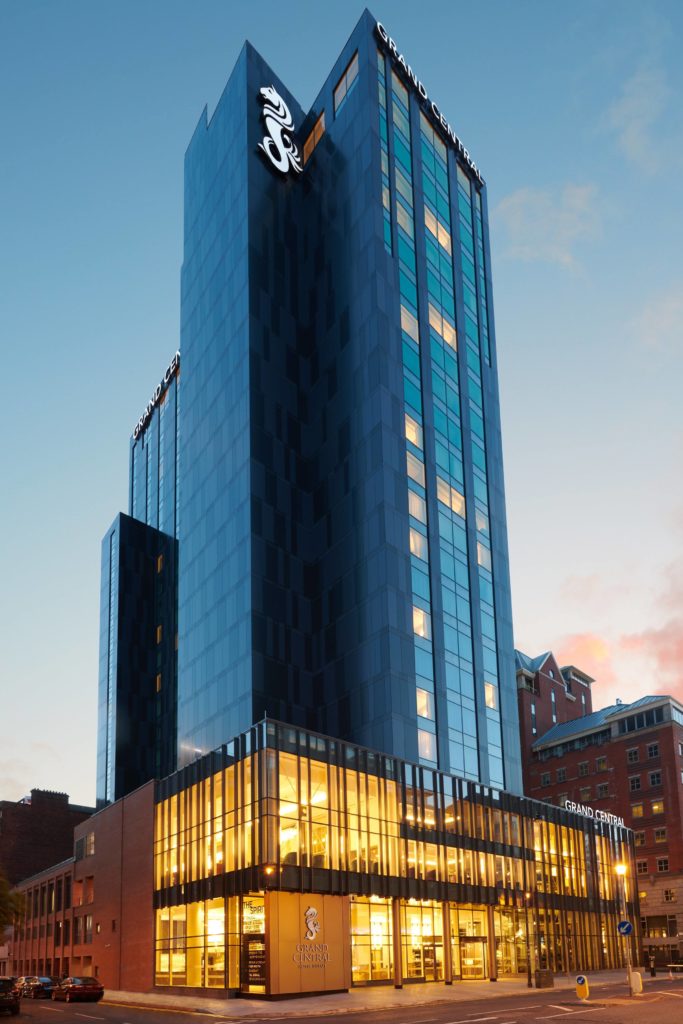 Belfast's Grand Central hotel
Belfast's Grand Central hotelSteeped in history, this elegant spot dates as far back as 1893, when it first opened its doors and quickly became the social hub of the city.
Set in the up-and-coming linen quarter, the hotel’s popularity continues.
Inside there is luxury at every turn, from its ample bedrooms to its chic restaurants and the stunning views from its rooftop bar.
From the moment you enter you are transported from the hustle and bustle outside to a city-central haven, which demands you sit back and relax – and they got no arguments from us there.
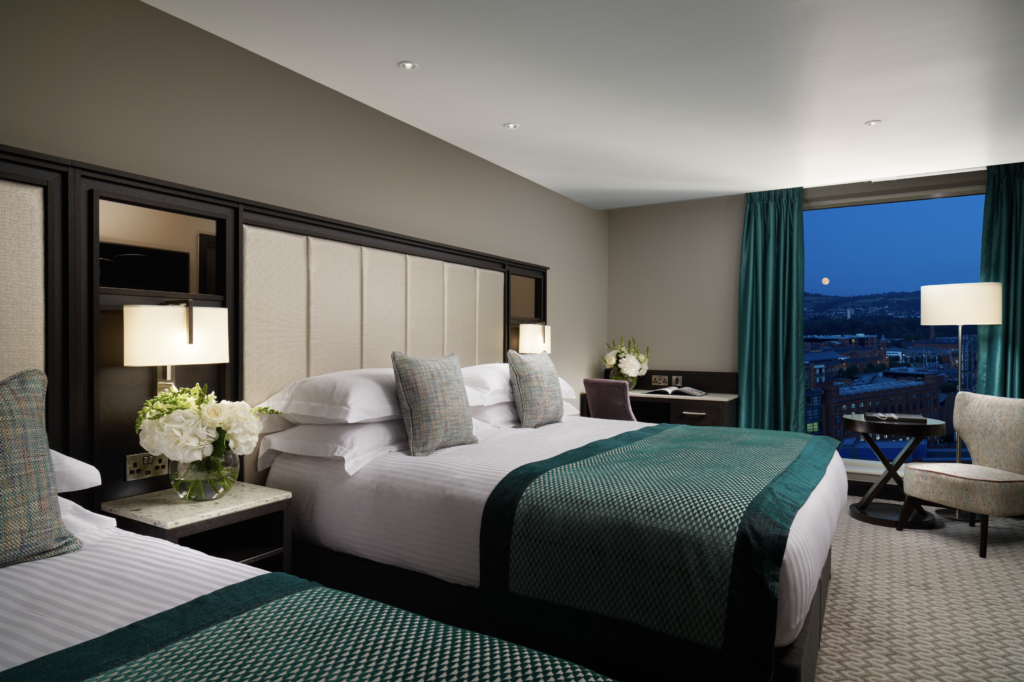 Treat yourself to a spot of luxury at the Grand Central hotel
Treat yourself to a spot of luxury at the Grand Central hotelBreakfast is a particular treat here too – offering a full Irish or a range of lighter options in gloriously plush surroundings as well a very well-received early morning hot chocolate for the children.
Just a stones’ throw away is room2 Belfast, which boasts an enticingly quirky alternative to the traditional hotel offering.
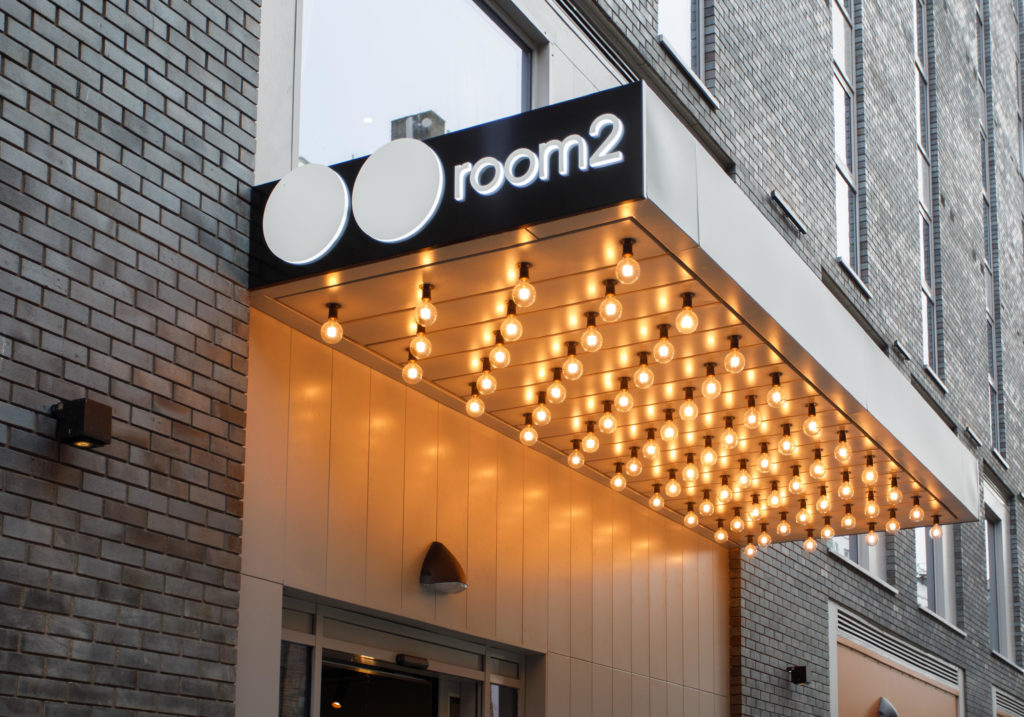 Enjoy hotel living with all the comforts of home at room2 Belfast
Enjoy hotel living with all the comforts of home at room2 BelfastLocated in Queen Street, the aparthotel, which describes itself as a ‘Northern Ireland’s first hometel’, is determined to make its guests feel truly at home.
Each room comes with a kitchenette, and you are invited to cook for yourself, if you fancy self-catering.
For those who don’t, you can order a takeaway or grab a bite to eat in the trendy bar and restaurant on the ground floor.
And there is a delicious hearty breakfast on offer here too – with all you might need to prepare for the day ahead.
Having opened just a year over ago in Belfast, the venue is currently celebrating its first birthday.
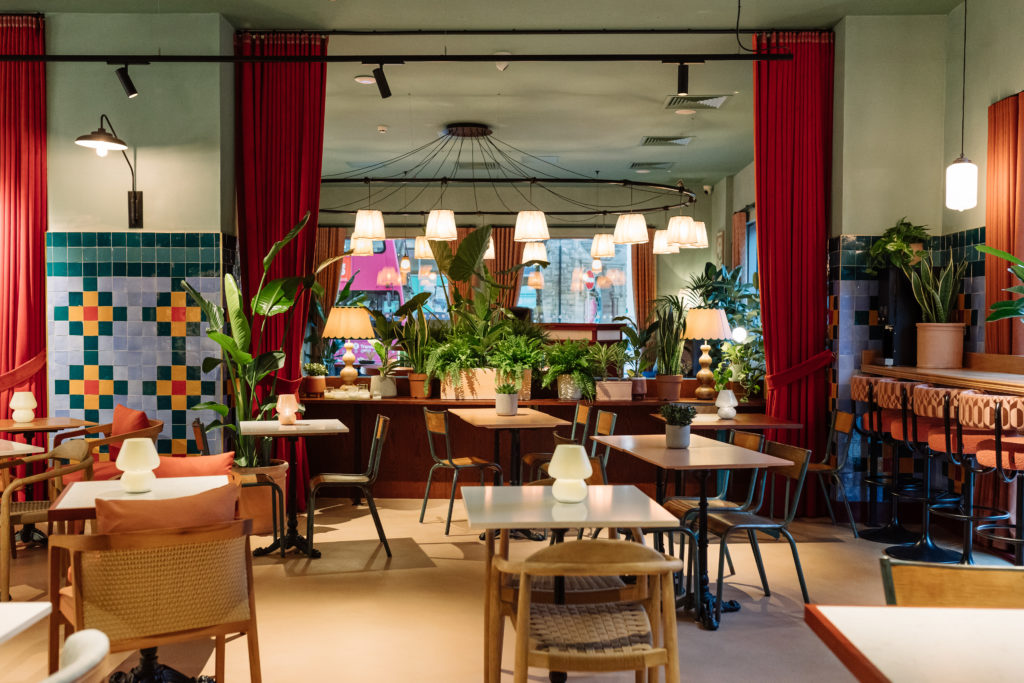 Belfast's popular room2 'hometel' is celebrating its first birthday in the city
Belfast's popular room2 'hometel' is celebrating its first birthday in the cityIt has a sister hometel in Southampton and two more in London and its take on the aparthotel concept continues to prove popular in Northern Ireland, with tourists and locals alike flocking to sample its home from home offering, as well as its onsite tearoom and an art gallery featuring the work of local artists.
We thoroughly enjoyed our stays at both locations. Neither could have been more accommodating for us a family, nor better positioned to allow us to explore what Belfast has to offer in a short space of time.
And there was so much to do in the city.
We managed to visit CS Lewis Square and indulge our love of the Chronicles of Narnia, we spent a morning at Crumlin Road Gaol and pondered the fact that at one time this jail would have housed children as well as adults, some as young as 10, and we even took a drive out to experience the mighty Giant’s Causeway.
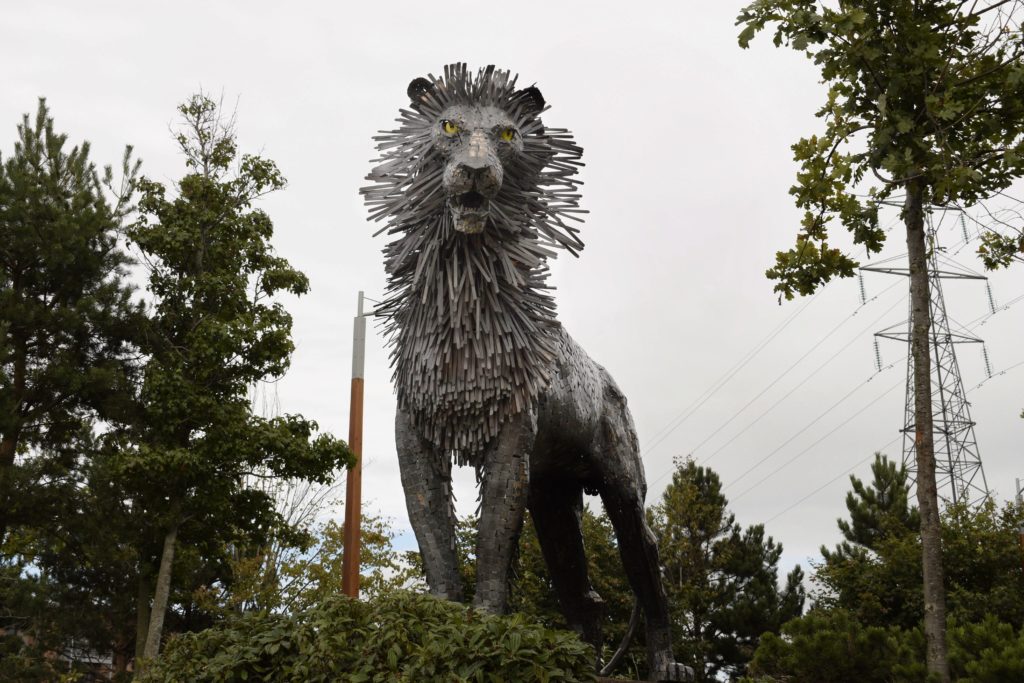 CS Lewis Square will be a hit with all Aslan fans
CS Lewis Square will be a hit with all Aslan fansBut what was particularly memorable was our visit to the Titanic Belfast experience.
Now I have read – and written – many lines about this iconic building, a relatively new jewel in Belfast’s crown, which tells the tale of the ill-fated jewel of its past.
And I have looked in awe at pictures of its shiny exterior, so impressively designed to look like the hull of a ship while reflecting all the life that shimmers around it.
But nothing prepared me for the sheer size of it and how it dominates the dockland area where it is located.
Positioned there, where it is built on the slipways where the Titanic itself was constructed at the Harland & Wolff (H&W) shipyard more than 100 years ago, its strikes a defiant pose, demanding to be looked at, for history to be told, while remaining inviting and enticing all the same.
 Titanic Belfast museum is a must-see for any visitors to the city
Titanic Belfast museum is a must-see for any visitors to the cityAnd you simply must take a moment, when you are in the shadow of this building, to savour its exterior.
It is exactly 126 feet – or 38.5metres – high, which is the same height as the Titanic’s hull, and the facade is made up of 3,000 individual silver anodized aluminium plates, which are reflective and, as such, change the appearance of the exterior depending on the time of day and the light which surrounds it.
And a fun fact for any of you Kent-based readers, architect Eric Kuhne, who designed the Belfast attraction, was also responsible for designing Bluewater Shopping Centre.
Once we had taken all that in, we found many more treats for the senses inside.
Now this is no ordinary museum, it’s a fully interactive experience which tells more than just the story of the Titanic.
There is a very clear journey through the building, you start at the start, and you end at the finish, and there is plenty in between.
Once inside and on the journey, there is no going back, as it’s a one-way system, but there is also no rush.
You can – and will want to – take your time as you soak up the story of Belfast and its most famous ship.
Through impressive displays, historic artefacts and fun activities you quickly get a sense of the socio-economic history of the city and how, for a time, it was the shipbuilding centre of the world.
But when you come to the facts about the Titanic, which sadly sunk after hitting an iceberg on its maiden voyage in 1912, well things really crank up a notch.
From the vision to the build to the finished vessel, this experience truly gives you a sense of how giant the Titanic was and what a mammoth task it was to construct it.
There is also footage from the completed ship and replica cabins on display which show just how luxurious it was too.
Even as you get to the latter stages of the experience, where the tragedy has happened and the death toll is on full display, it remains engaging and enjoyable.
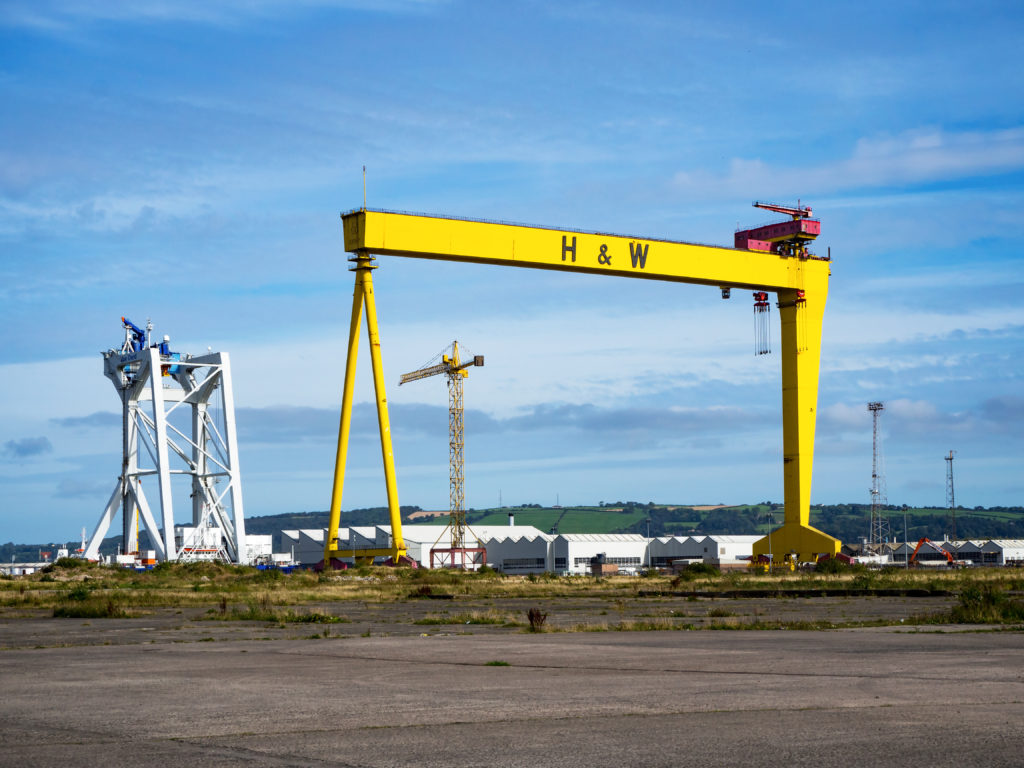 The iconic Harland & Wolff (H&W) shipbuilding gantry cranes are a key feature in Belfast's Titanic Quarter
The iconic Harland & Wolff (H&W) shipbuilding gantry cranes are a key feature in Belfast's Titanic QuarterYes, it is sombre, but those lives need to be remembered, and the story needs to be told and those behind the experience have got that balance just right.
There is of course more to Belfast than just the Titanic, but when you are there on the ground this historic behemoth really feels central to the identity of the city.
That feeling is not only contained within the Titanic Quarter either. It stretches out through the streets, it is marked in memorials, gardens and street names, and at pubs, hotels and restaurants dotted throughout the area.
The tragedy very clearly remains relevant to Belfast today. So too does its proud ship-building past, as well as its former glory days as a linen producer - by the end of the 19th century the city was the linen-producing capital of the world.
They are the giant footsteps in which generations of people from this part of Northern Ireland have walked over the decades that have since passed.
Much has happened in this city, there are layers upon layers of history, of trials, tribulations and Troubles.
But Belfast has come through those periods and emerged renewed each time.
And when you begin to understand that, well then you start to get a better sense of the city, of its people, and the lives they have lived.
As we walked the streets – Belfast is an entirely walkable city – we were continually struck by their vibrancy, from colourful murals on the walls at every turn, to rousing music playing in the bars and hotel lobbies.
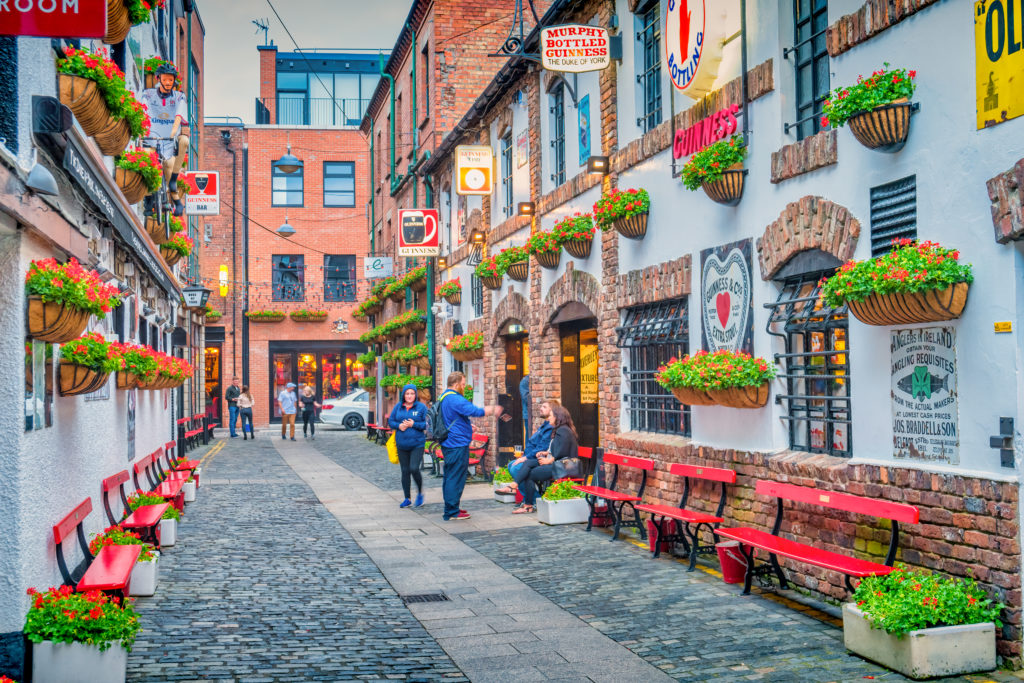 There is plenty to savour on a walkabout through Belfast's streets
There is plenty to savour on a walkabout through Belfast's streetsThere was a constant juxtaposition of the old and the new, of today and of yesterday, of the future and the past.
But the contrasts work, they complement one another.
Another example of this was the really rather stately Belfast City Hall.
First opened in 1906, at a time when the area was enjoying unprecedented prosperity and bore industrial might on the international stage, the building was created to mark Belfast officially being designated a city some years previously.
The brief was to create a grand and magnificent centrepoint to mark this new status.
Today, this building remains just as grand. And although its purpose is now very different, it is still there in Donegall Square, where it sits unassumingly, slotted in between hotels, tall office buildings and busy shopping streets, offering the perfect vantage point to keep silent watch on the people of the city.
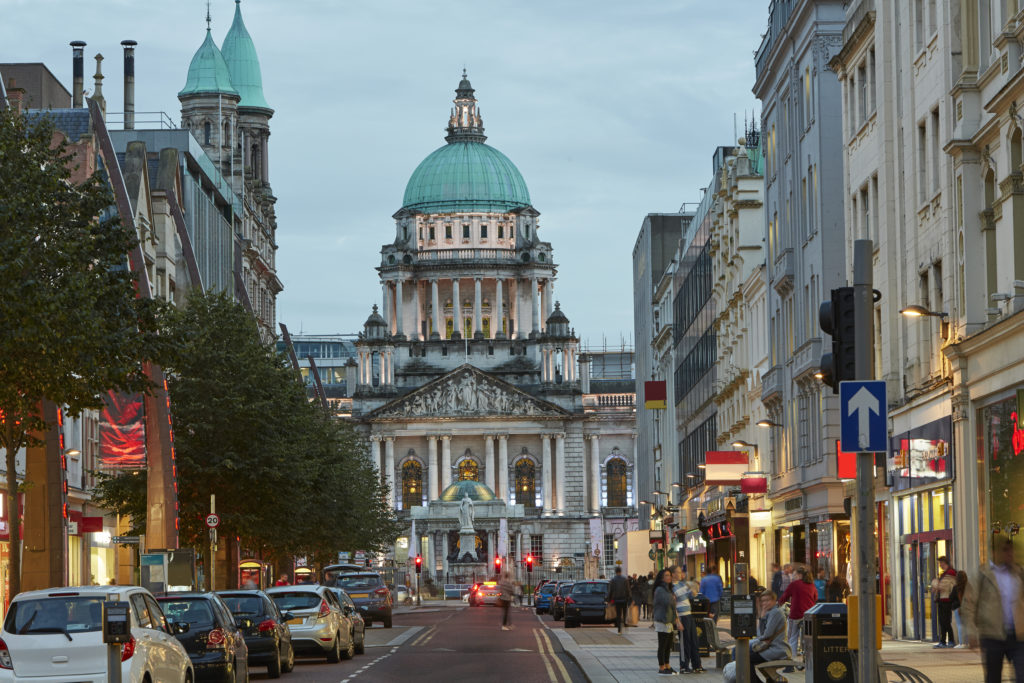 Belfast City Hall is a stately reminder of the city's lengthy history
Belfast City Hall is a stately reminder of the city's lengthy historyIt is a bustling space too, with locals finding spaces on its benches and green spaces to eat their lunch and tourists sitting alongside them while resting weary toes in between the seeing of sights.
We too took up a perch there in those grounds on more than one occasion during our trip and simply enjoyed the surroundings.
It offered the perfect place to rest and reflect on our time there.
While we could certainly have done with more time in the city, Belfast, in all its topical, historic and welcoming glory, did not disappoint.
Five family-friendly activities in Belfast
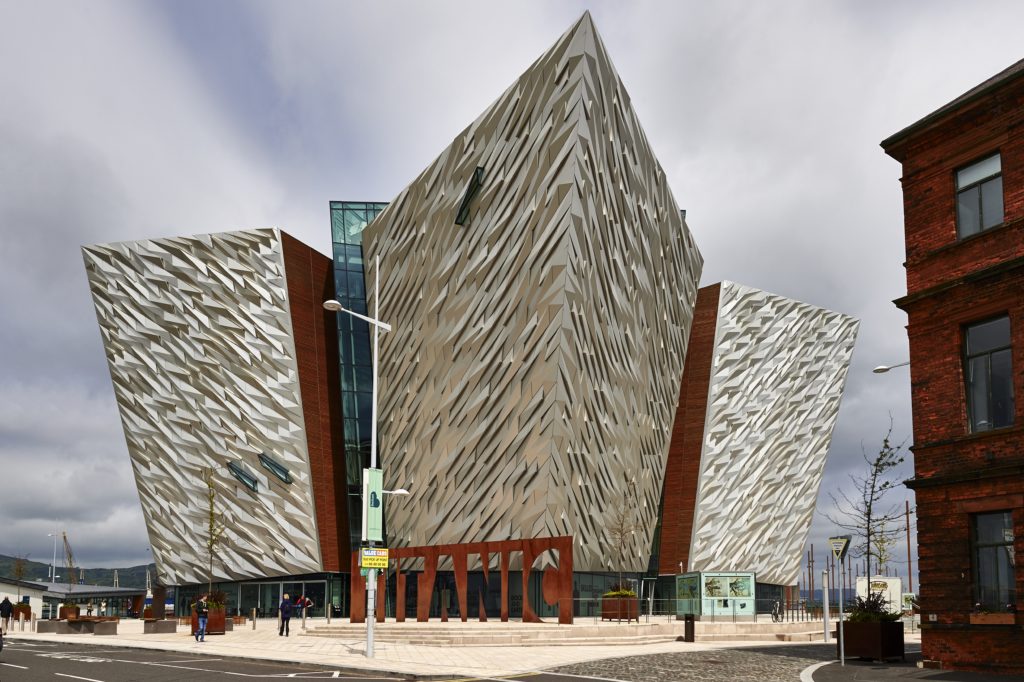 Titanic Belfast
Titanic BelfastTitanic Belfast
This experience is simply not to be missed if you are in Belfast.
Grab your ticket and prepare to be immersed in the history of this city and its links to the maritime tragedy.
The iconic building, with the shimmering exterior, contains nine galleries spread across six floors mirroring the height of Titanic, as well as interactive exhibitions, an underwater cinema and gantry rides.
This is the whole story, from dream to tragedy.
Allow at least three hours to take in a mix of moving images, special effects and reconstructions – and do book tickets in advance.
Crumlin Gaol
The Crumlin Road Gaol dates back to 1845 and closed its doors as a working prison in 1996.
After extensive renovations it reopened as a visitor attraction and conference centre in 2012, so now you can explore the prison as part of the Crumlin Road Gaol Experience.
History abounds inside its walls, where men, women and children were all held for varying levels of crime.
At the height of the Troubles it housed both republican and loyalist prisoners, with the likes of Martin McGuinness, Bobby Sands, Michael Stone and Ian Paisley among its its more notable inmates.
The experience allows you to visit the underground tunnel that used to connect the gaol to the Crumlin Road Courthouse across the road and to pay a visit to execution cell where the majority of 17 men were executed in the course of the prison’s time in operation.
Observatory
The awe-inspiring cocktail lounge on the top floor of the Grand Central hotel is a must-visit while in the city.
It offers truly spectacular, unique views of Belfast as well as tasty cocktails or whatever you fancy in terms of a tipple.
While a bar visit may not seem an entirely child-friendly option, I can assure you this is.
The Observatory is open to younger guests until 6pm and it’s a relaxing space to take a break from the streets and experience the city on a whole new level.
Credited as being Ireland’s tallest bar, it boasts a 360-degree view of the city.
All you have to do is take a seat and marvel at the unparalleled vistas of the city below, which is a treat for all ages.
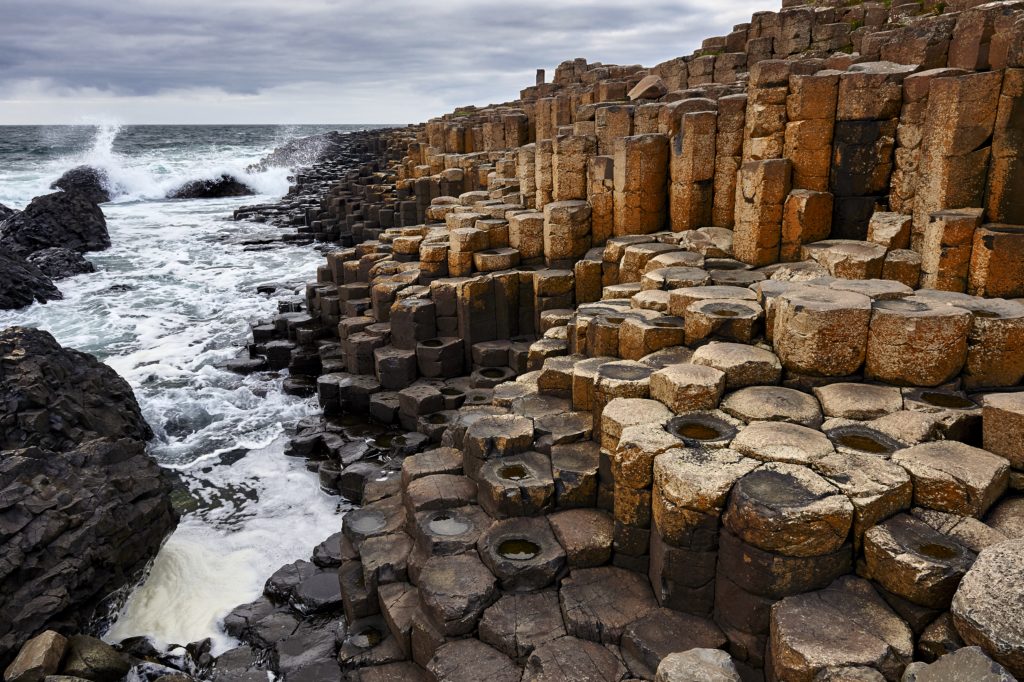 Giant's Causeway
Giant's CausewayGiant’s Causeway
Flanked by the wild Atlantic Ocean and a landscape of dramatic cliffs, for centuries the Giant’s Causeway has inspired artists, stirred scientific debate and captured the imagination of all who see it.
It is Northern Ireland's only UNESCO World Heritage Site and it is well worth a drive out to if you are in Belfast.
Then journey is little over an hour from the city and there are plenty of firms offering day trips and guided tours.
Once there you can walk to the stones for free, but the Giants Causeway Visitor Experience offers a self-guided audio tour which tells you the enchanting tale of the legendary Irish warrior Fionn Mac Cumhaill and how he is connected to the creation of the beauty spot.
CS Lewis Square
Rediscover The Chronicles of Narnia with a walk through CS Lewis Square, a public space commemorating the Belfast-born author, CS Lewis.
Featuring seven bronze sculptures from The Lion, The Witch and The Wardrobe, including Aslan, The White Witch, Mr Tumnus, The Beavers, The Robin and The Stone Table, it is a stunning display of public art.
Located at the intersection of the Connswater and Comber Greenways, beside the EastSide Visitor Centre, there is easy access information for visitors interactive screens, interpretative panels and a wall map.
The Centre also includes a coffee bar, named after the author, who is affectionately known as 'Jack' to friends and family.
The Jack Coffee Bar features locally sourced produce and showcases products from local artists and food producers.
Where to stay
Grand Central Hotel
Bedford Street, Belfast. 02890 231066
Queen Street, Belfast. 028 9018 4198
Getting there:
Stenaline runs a direct service between Liverpool and Belfast.
With up to four daily direct sailings, and a choice of day and night crossings, you'll cruise across in just eight hours on one of Stenaline’s two new ferries, which are the largest, most spacious and most stylish ever to sail the route.
Enjoy a drink in the stunning Sky Bar, relax in an en suite cabin, watch a choice of movies at the on-board cinema or treat yourself to an upgrade to Stena Plus or the Hygge Lounges all whist enjoying the stylish Scandinavian design.

